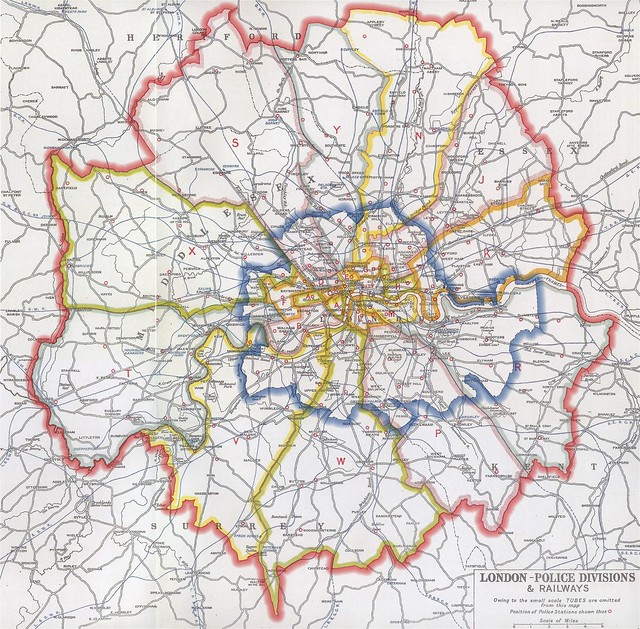Originally posted by PaulB
View Post
Originally posted by Chris
View Post

The Metropolitan Police District, and the City of London Police District, 1888 (Red Outline); 'Metropolitan London', 1888 (Navy Outline) (Click Image, to Enlarge in flickr)
In Accordance with the Census of England & Wales, 1891:
'Greater London', i.e. the Metropolitan Police District and the City of London Police District (Red Outline)
- Area: 443,421.00 Statute Acres, i.e. Approximately 692.85 Square Miles
- Population: 5,633,806
- Population Density: 8,131 Persons per Square Mile
- {The Metropolitan Police District}
--- Area: 442,750.00 Statute Acres, i.e. Approximately 691.80 Square Miles
--- Population: 5,596,101
--- Population Density: 8,089 Persons per Square Mile
- {The City of London Police District}
--- Area: 671.00 Statute Acres, i.e. Approximately 1.05 Square Miles
--- Population: 37,705
--- Population Density: 35,910 Persons per Square Mile
---
'Metropolitan London'*, i.e. The Administrative County of London (Inclusive of the City of London) (Navy Outline)
- Area: 74,771.00 Statute Acres, i.e. Approximately 117.88 Square Miles
- Population: 4,232,118
- Population Density: 35,902 Persons per Square Mile
* As Defined, in 1888, by the Boundaries of Jurisdiction, of the Metropolitan Board of Works
Again:
Greater London, 1891: 5,633,806
Metropolitan London, 1891: 4,232,118
So, in accordance with the chance estimation that Chris has cited,
Originally posted by Chris
View Post
Call it 19!
The figure of 400,000 that keeps popping up isn't worth the latex glove that I trust Mr. Marriott wore during the extraction process.
This is quite possibly a massive development, and it isn't going to simply wither away.
If my doctor told me that I had lung cancer, I would indeed demand second and third opinions. But I wouldn't stomp my feet whilst childishly demanding an explanation in light of the fact that I didn't smoke.





Comment